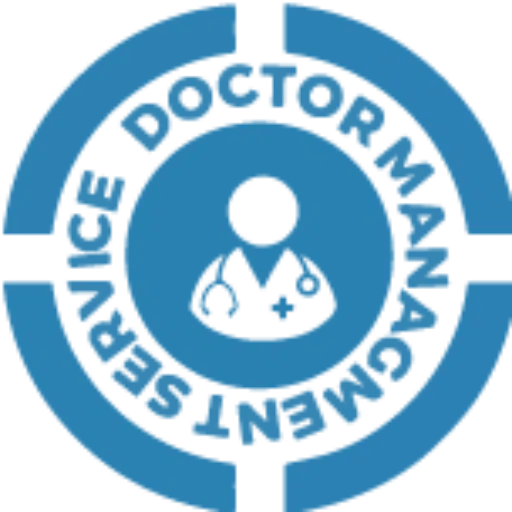Introduction:
Starting a medical clinic is a noble and challenging adventure that requires planning and execution. Whether you’re a carefully prepared healthcare proficient or a growing business entrepreneur in the medical field, making an extensive checklist is significant for an effective launch. In this blog post, we’ll guide you through a quick checklist covering legal, functional, and vital perspectives to guarantee a smooth beginning for your medical clinic.
1. Legal Considerations:
Business Structure: Determine the legal structure of your medical clinic. Choices incorporate sole proprietorship, partnership, limited liability company (LLC), or enterprise. Talk with a legal expert to pick the most reasonable structure for your clinic.
Regulatory Compliance: Guarantee compliance with neighborhood, state, and government guidelines. This incorporates acquiring the fundamental licenses, permits, and certifications. Find out more about healthcare guidelines and norms like HIPAA (Health Insurance Portability and Accountability Act).
Insurance Coverage: Secure the appropriate protection inclusion, including malpractice insurance for healthcare providers, general risk protection, and property insurance. Adequate insurance is fundamental to protect your facility from unforeseen risks.
2. Facility and Equipment:
Location: Choose a strategic location for your medical center, taking into account accessibility for patients and proximity to other healthcare offices. Guarantee consistency with zoning guidelines.
Facility Design: Design the center layout to enhance patient stream and oblige fundamental offices like examination rooms, waiting areas, and administrative spaces. Focus on a welcoming and agreeable environment.
Equipment and Technology: Participate in cutting-edge medical equipment and technology. This incorporates demonstrative tools, electronic health record (EHR) systems, and telemedicine abilities. Keep up to date with mechanical progressions in healthcare.
3. Staffing and HR:
Hire Qualified Staff: Assemble a competent and compassionate group of healthcare experts. This incorporates physicians, nurses, administrative staff, and support faculty. Check certifications and lead intensive interviews to guarantee a cohesive group.
Training Programs: Implement ongoing preparation programs for staff to remain refreshed on the most recent medical practices, technology, and patient consideration protocols. Continuous education adds to the progress of your medical clinic.
Human Resources Policies: Develop comprehensive HR approaches covering representative conduct, benefits, and disciplinary methods. California Appointment Scheduling guarantees consistency with employment laws and guidelines.
4. Financial Management:
Budget Planning: Create a detailed plan outlining startup costs, operational costs, and anticipated revenue. Factor in possibilities to explore startling financial difficulties.
Billing and Revenue Cycle Management: Establish efficient billing cycles and implement a vigorous revenue cycle management system. This incorporates checking insurance qualifications, exact coding, and timely billing to maximize income.
Financial Systems: Implement accounting software to update financial cycles. Constantly screen financial rumors to arrive at informed decisions about the clinic’s financial well-being.
5. Marketing and Branding:
Online Presence: Develop an expert website with fundamental data about your medical clinic, including services available, staff profiles, and contact intricacies. Use social media stages to enhance your online presence.
Community Outreach: Engage in community outreach projects to collect cognizance about your clinic. Participate in health fairs, establishment neighborhood events, and cooperate with other healthcare providers.
Referral Networks: Establish transfer networks with other healthcare specialists and organizations. Building hard relationships inside the medical community can add to the development of your clinic.
6. Patient Experience and Satisfaction:
Appointment Scheduling: Implement an effective arrangement scheduling organization to bound stand-by times and advancement patient fulfillment. Consider integrating online scheduling for added convenience.
Communication Channels: Boost effective communication among patients and healthcare providers. Implement a patient entrance for secure communication, appointment information, and access to medical records.
Patient Feedback: Invigorate and actively look for patient feedback to work on the quality of care and services nonstop. Implement feedback components like studies and reviews.
7. Technology Integration:
Electronic Health Records (EHR): Participate in a robust EHR system to update determined record-keeping, further develop data precision, and improve cooperation among healthcare providers. Workers Compensation Billing guarantees that your select system consents to industry rules and works with interoperability.
Telemedicine Infrastructure: Implement a telemedicine platform to offer far-off discussions, screen patients from a distance, and give open healthcare services. This can be especially important for follow-up appointments and supervision of chronic circumstances.
Cybersecurity Measures: Given the sensitive nature of healthcare information, focus on network protection. Implement data information encoding, routinely update software, and train staff on cybersecurity best practices. Protecting patient data isn’t just ethical but also a legal necessity.
8. Regulatory Compliance Continued:
Ongoing Monitoring: Remain vigilant about changes in healthcare guidelines. Routinely review and update your approaches and procedures to guarantee progressing consistency. This incorporates keeping abreast of changes in coding and billing prerequisites.
Quality Assurance Programs: Lay out quality assurance projects to screen and improve the quality of healthcare services given. Conduct regular reviews to guarantee adherence to clinical rules, patient security protocols, and regulatory guidelines.
Patient Privacy: Implement severe conventions to protect patient privacy and comply with HIPAA guidelines. Train staff on the significance of patient confidentiality and routinely review systems to recognize and address potential privacy breaks.
Goals on Quick Checklist | Starting a Medical Clinic:
- Get all vital licenses permitted and allow for legal consistency.
- Design and set up a patient-driven center layout for an ideal stream.
- Recruit and install a gifted and caring healthcare group.
- Implement a strong electronic health record (EHR) framework.
- Establish successful billing and revenue cycle management processes.
- Foster a strong online presence through an expert website and social media.
Conclusion:
Launching and sustaining a medical clinic is a powerful interaction that requires versatility and continuous improvement. This expanded agenda covers extra basic viewpoints, like technology integration, continuous regulatory consistency, local area commitment, and community readiness. By addressing these parts, you not only set the groundwork for a successful sendoff yet in addition make ready for long-haul achievement and positive commitments to your local area’s healthcare scene.

